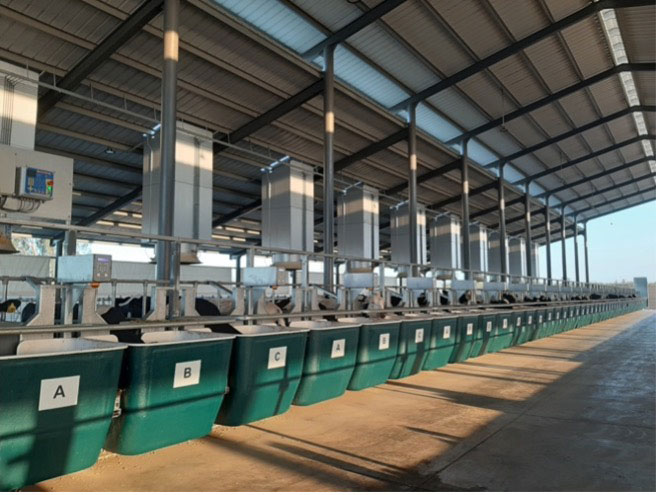The Rumen Ecosystem
The rumen hosts a complex microbial ecosystem containing many thousands of unique microorganisms (microbes) dynamically interacting with each other that together enable a dairy cow to access energy from her feed. We identified the keystone microbes in the dairy cow rumen by applying machine-learning algorithms and network analysis to our proprietary database containing quantitative rumen microbiome sequencing information linked to a variety of critical health and nutritional animal parameters. The result of this analysis is GalaxisTM Frontier — our latest feed supplement containing four of these keystone rumen microbes. All four microbes were isolated from the rumen fluid of healthy dairy cows. Extensive research was conducted to cultivate these strains and develop a specialized preservation method to allow them to survive the trip from bag to rumen.
The Native Microbes in Galaxis Frontier
- Pichia kudriavzevii is a highly catabolic fungus capable of breaking down cellulose and hemicellulose, some of the toughest bonds in nature.
- Clostridium beijerinckii is a bacteria that produces the short chain fatty acids (SCFAs) acetate and butyrate, which are used as the building blocks of de novo milk fat in the mammary glands.
- Butyrivibrio fibrisolvens is a motile bacteria that performs biohydrogenation of the linoleic acids abundant in forages to generate vaccenic acid, which is used in the mammary gland to create the majority of conjugated linoleic acid found in milk.1
- Ruminococcus bovis is a novel species of bacteria isolated by Native Microbials that is highly influential on other rumen microbes, can catabolize resistant starch, and produces huge amounts of SCFAs.

Galaxis Frontier in Action
The native rumen microbes in Galaxis Frontier represent a relatively small amount of the total microbial diversity in the rumen, but in experiments, we have shown that consistently supplementing these microbes through the TMR leads to proportional increases in their ruminal abundance. Further, when these four rumen-native microbes are supplemented into dairy cow feed on a daily basis, digestibility improves, allowing the cow to unlock more energy from the same amount of feed. In a controlled 40-week trial conducted at Dairyexperts in Tulare, California, with the improved digestion, we observed an increase in energy-corrected milk across the lactation cycle, with the biggest increases post-peak.2 Optimizing the rumen microbiome allowed daily milk fat and protein to increase, as well as feed efficiency. No changes in body condition were observed, highlighting the ability of these rumen microbes to more efficiently harvest energy from the cow’s TMR. For more details about this trial, view this short presentation given at the 2021 American Dairy Science Association’s annual meeting.
At Native Microbials, we are committed to the science and are continuing to perform validation studies, both to confirm these results as well as to unravel the mechanisms of action underlying these microbially mediated changes in animal health and efficiency.
Contact us at info@nativemicrobials.com to find out more about Native Microbials and how you can bring this new biotechnology to your farm.
1 Lock, A. L., & Bauman, D. E. (2004). “Modifying milk fat composition of dairy cows to enhance fatty acids beneficial to human health.” Lipids, 39(12), 1197-1206.
2 Valldecabres, A., Gilmore, S., Zhelev, I., Embree, J., Quinlan, S., Martino, C., Embree, M., Camacho, G., & Lago, A. (July 2021). “Effect of native rumen microbe supplementation in feed on milk yield, composition, and feed efficiency in lactating dairy cows.” American Dairy Science Association Conference.


